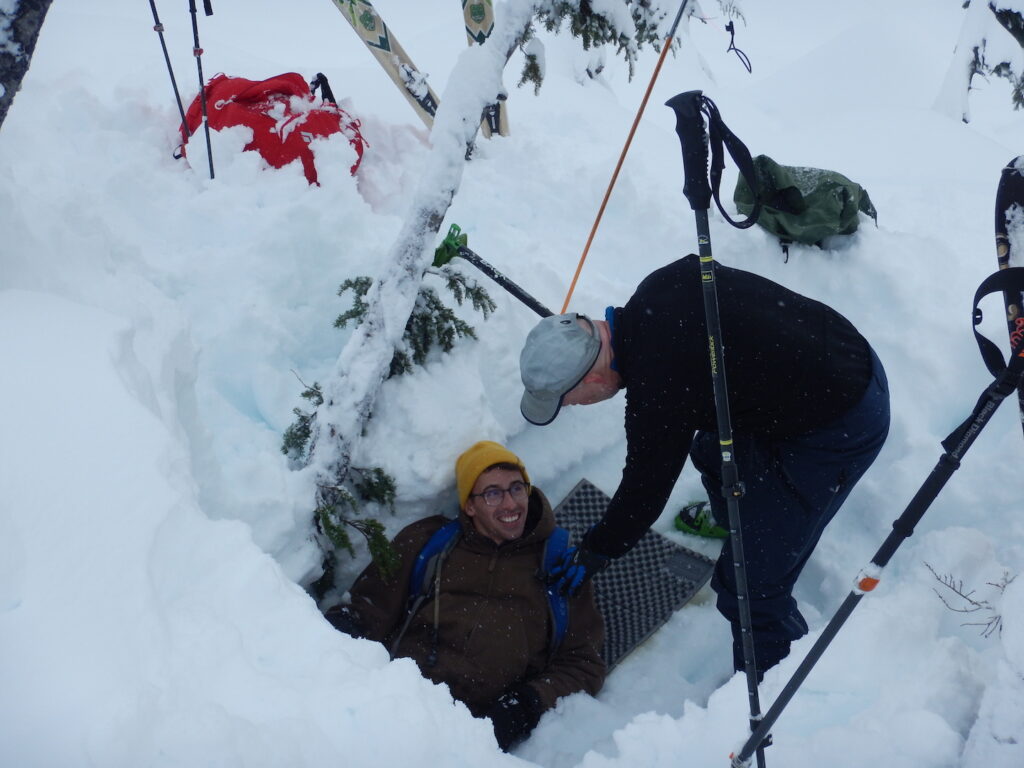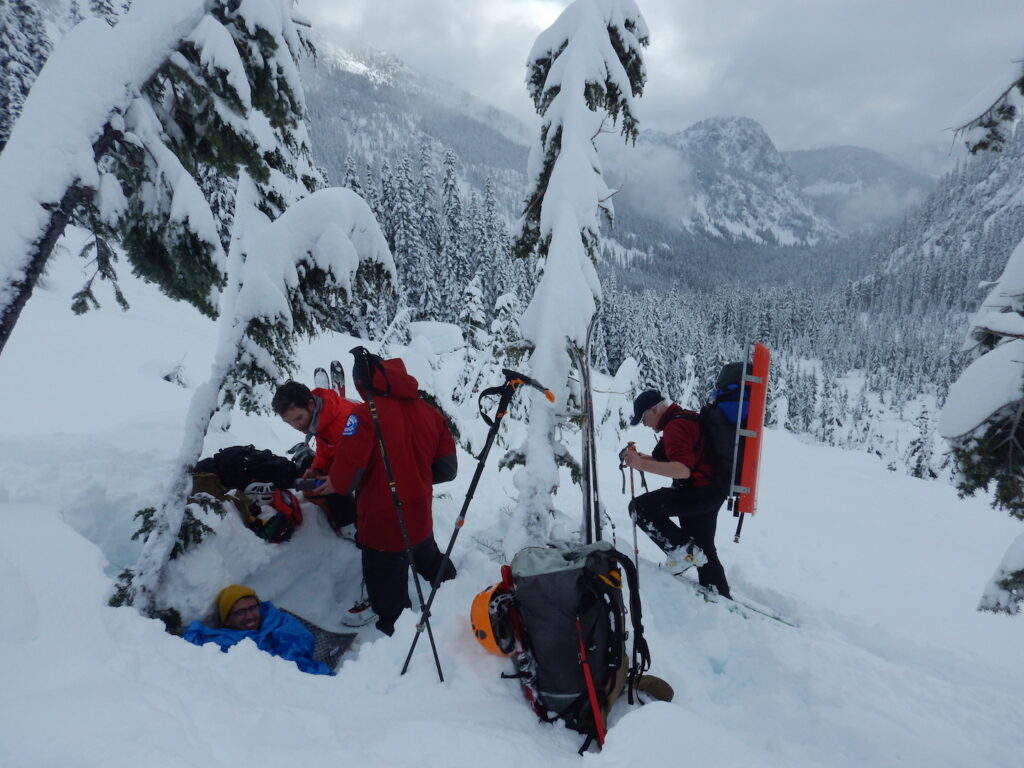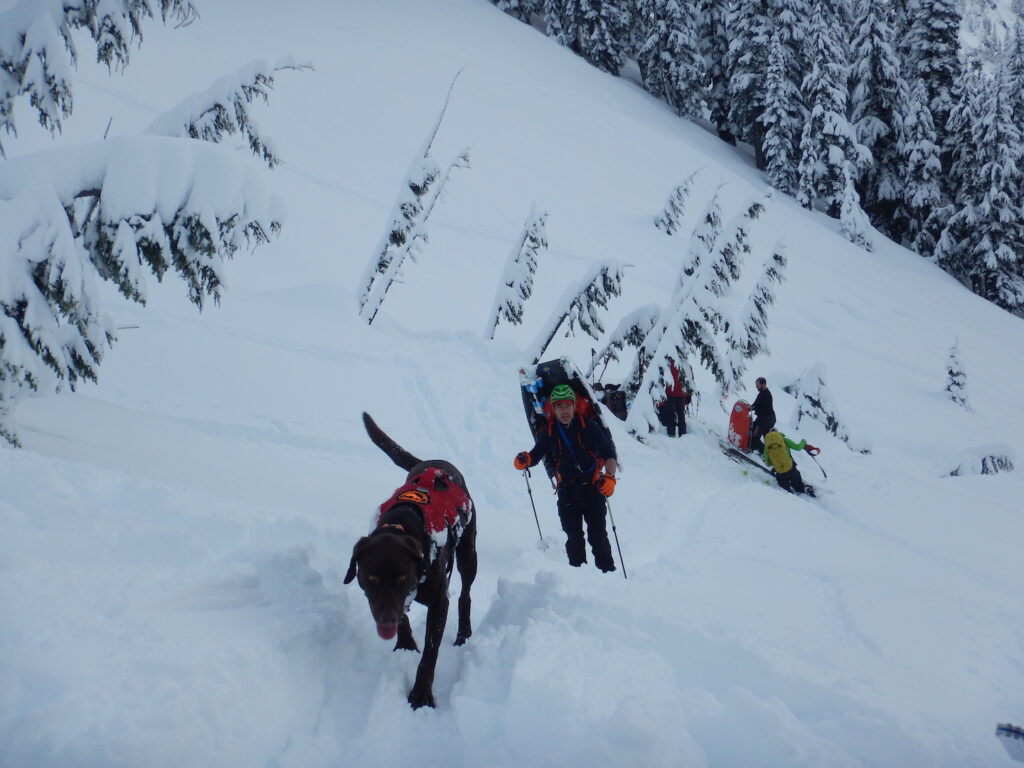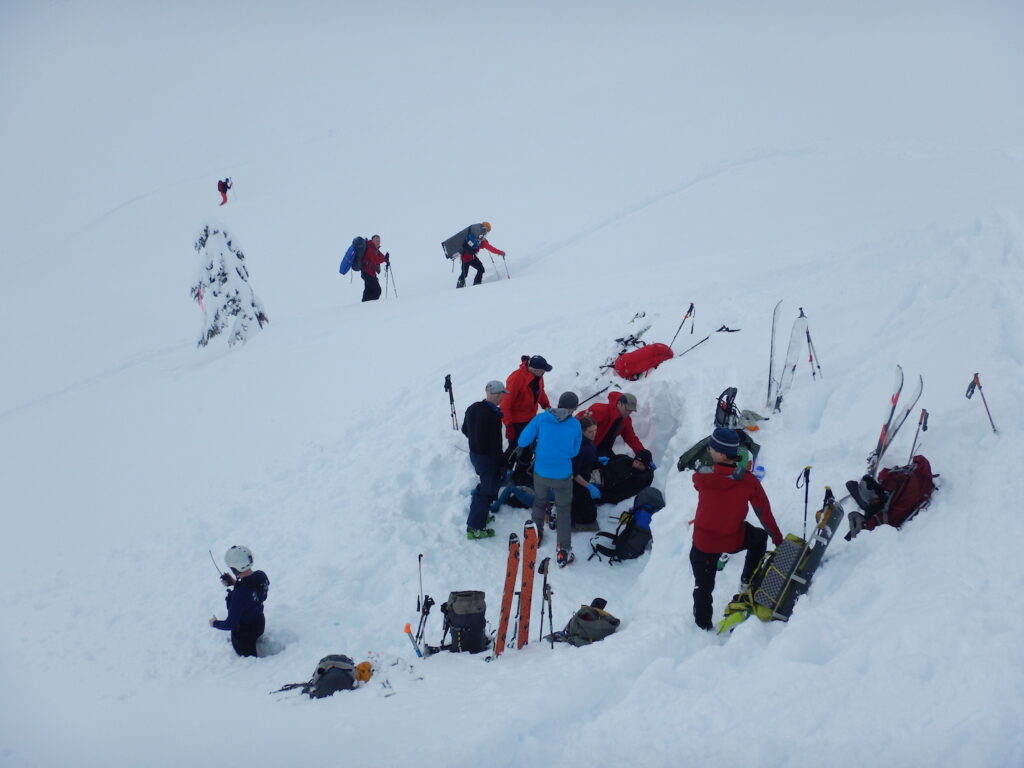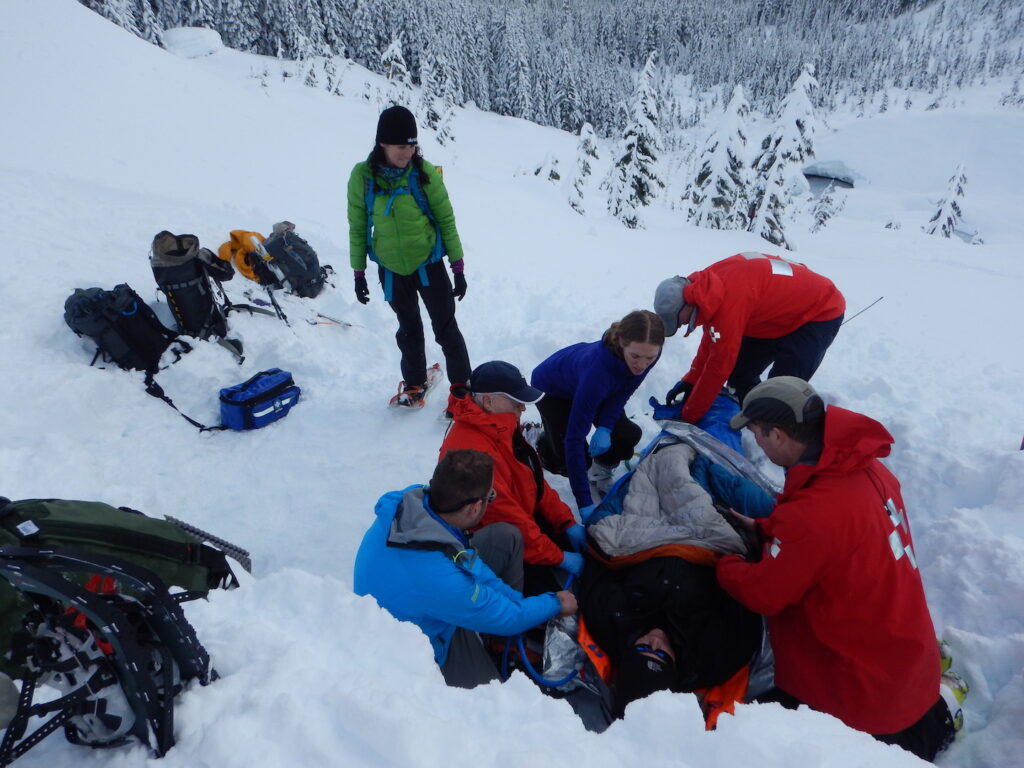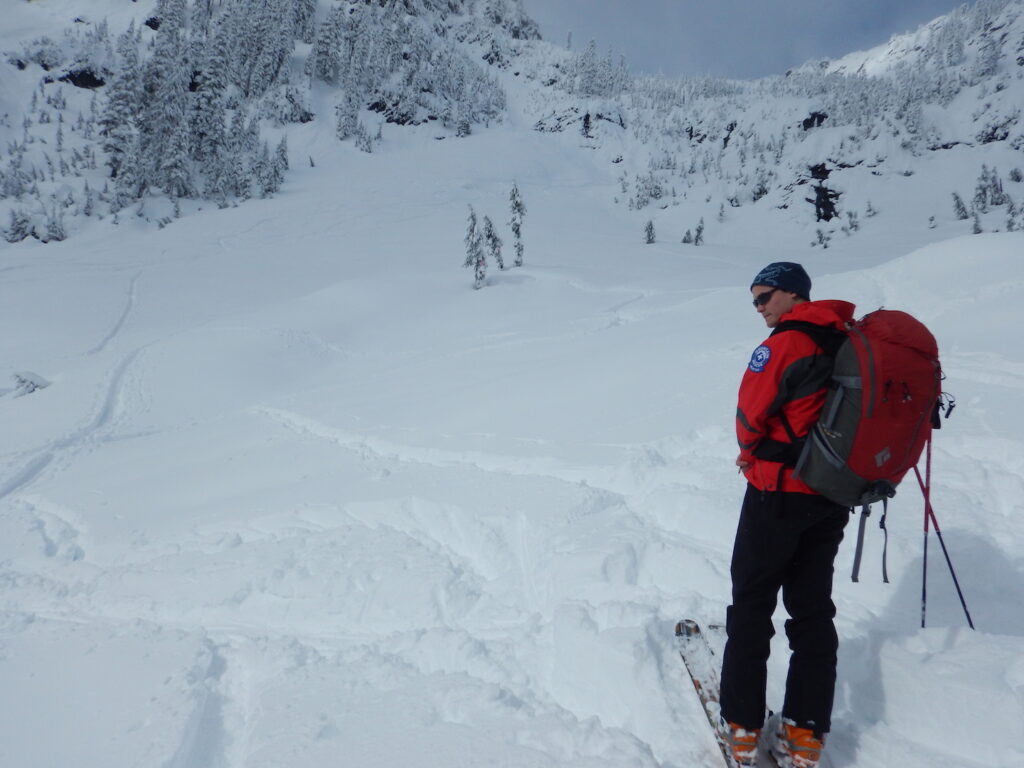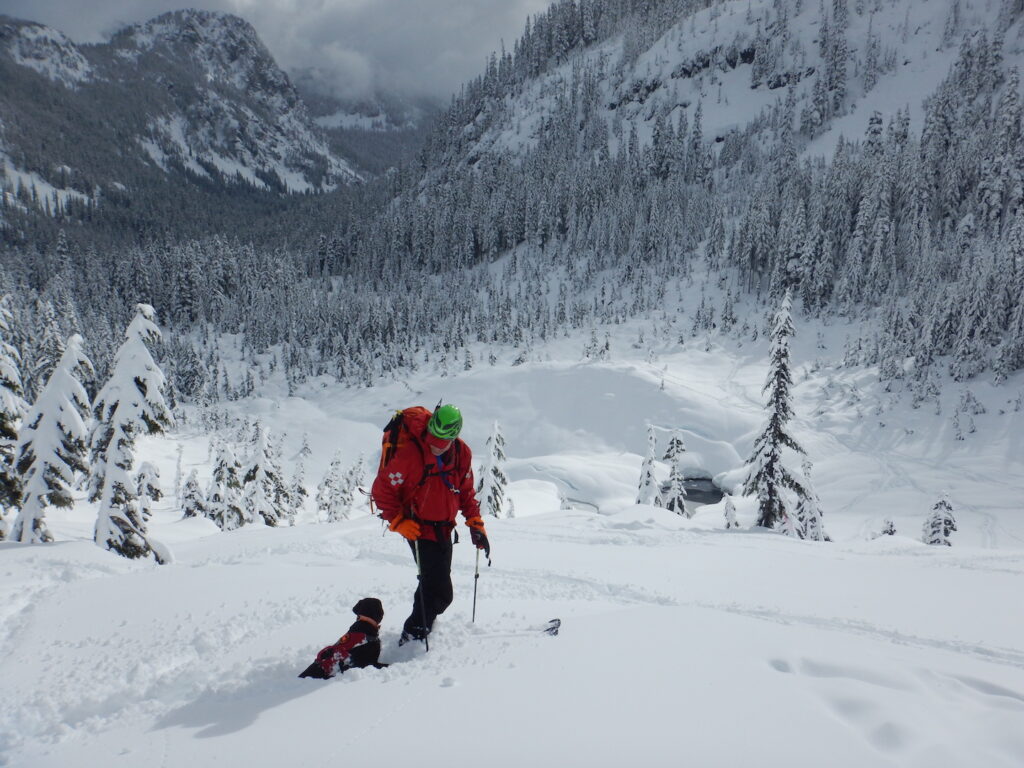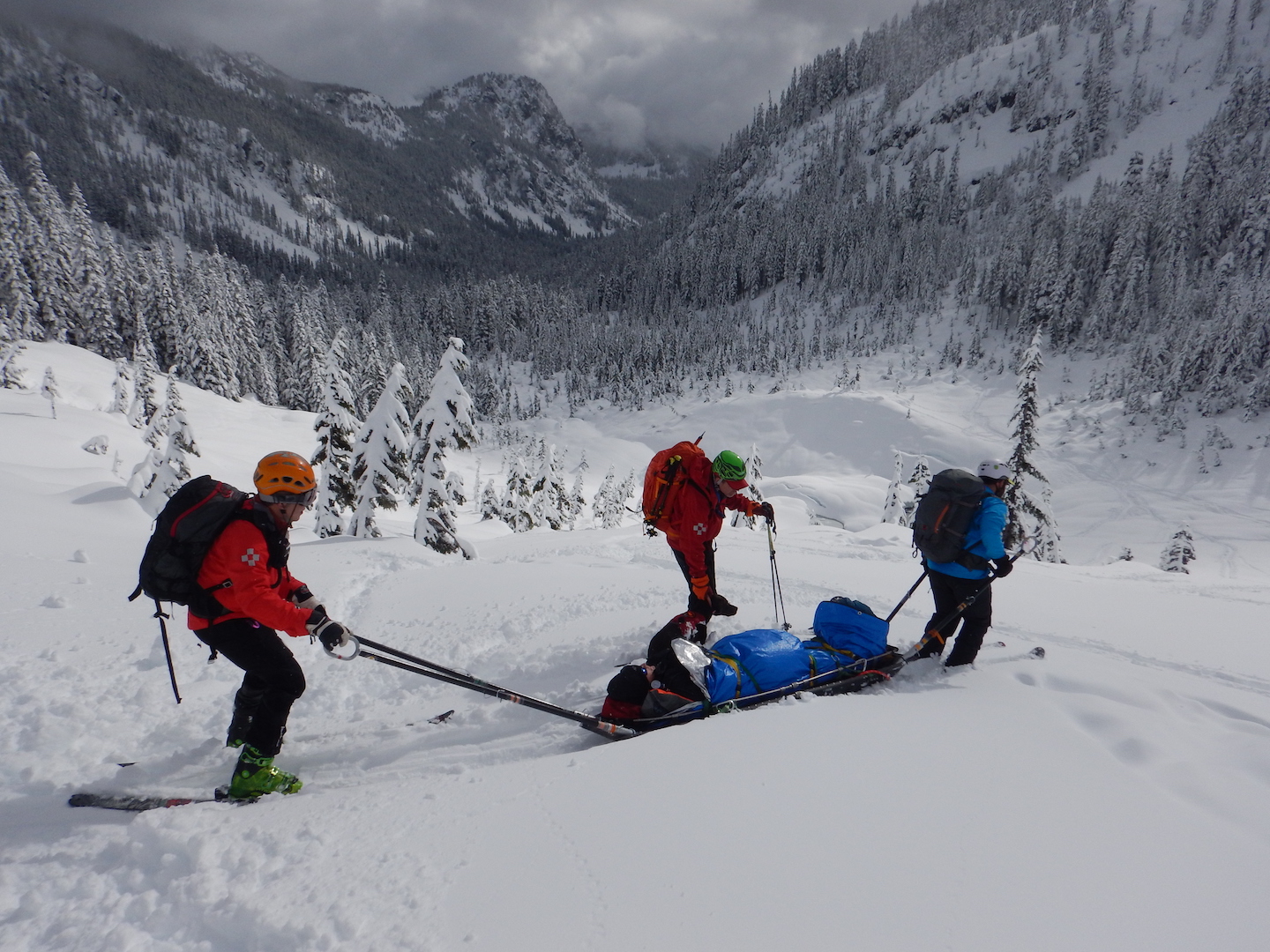Last weekend I was an avalanche victim.
Ok, before I worry everyone, it’s not entirely true. I wasn’t a real avalanche victim, but I did get to play one for a large search and rescue avalanche training exercise. It was a memorable and eye-opening experience that allowed me to see firsthand the amount of skill and discipline required to coordinate a search and rescue response.
Here in Seattle, the King County Search and Rescue Association (KCSARA) has over 500 active members across eight units and is entirely donation supported. These volunteers risk their own lives to come save ours when things don’t go quite as planned and they dedicate considerable time and resources to do it.
It’s pretty easy for most of us who spend time outdoors to support our local search and rescue teams, but if you’ve never volunteered with them or needed their services, it’s tough to fully grasp the level of effort required for a rescue. These amazing men and women demonstrate remarkable skills and dedication and spend considerable time training for all kinds of scenarios.
Last Saturday, two KCSARA units, Seattle Mountain Rescue (SMR) and the Ski Patrol Rescue Team (SPART), teamed up for a large avalanche training scenario at Source Lake near Snoqualmie Pass. Although both teams are active year-round in a variety of capacities, SMR is skilled in high angle, high hazard operations and SPART is trained for winter backcountry and avalanche rescues. They frequently work together on winter avalanche rescues.
Someone I know inside SMR asked me if I would consider volunteering my time to be a live subject for the training. I didn’t think twice before saying “Heck yeah!” Since I had kicked around some loose plans to snowshoe with two friends that day, I volunteered them as well. When I told them that our snowshoe outing was morphing into a mock avalanche rescue they were equally excited. I have great friends, what can I say?
The training organizers filled us in on the details of the scenario. An SMR team member would spend his Friday night burying three duffel bags with avalanche beacons in locations near Source Lake only known to him. Each duffel bag would represent a mock subject. One would be deceased, another would have a broken leg, and the third a broken back. Twenty or more rescuers would meet Saturday morning to organize the mission, search for the beacons, then practice patient triage and packaging on live subjects, played by myself and my friends. None of the rescuers knew the full details of what to expect and it’s safe to say that aside from understanding our roles, we had no idea either!
It was the first joint training exercise for these two units in quite a while and one of the largest avalanche training scenarios they’ve ever practiced. We were pretty excited to take part.
Early Saturday morning, I met my friends Scott and Ian at Alpental along with our SMR point person. He had staged the training site at Source Lake and would safely guide us to it. This location in winter does have real, live avalanche danger and with a fair amount of snow the day before we welcomed an experienced escort. The morning was also a great reminder of why early starts are well worth it: we broke trail through gorgeous fresh snow all the way to the lake!
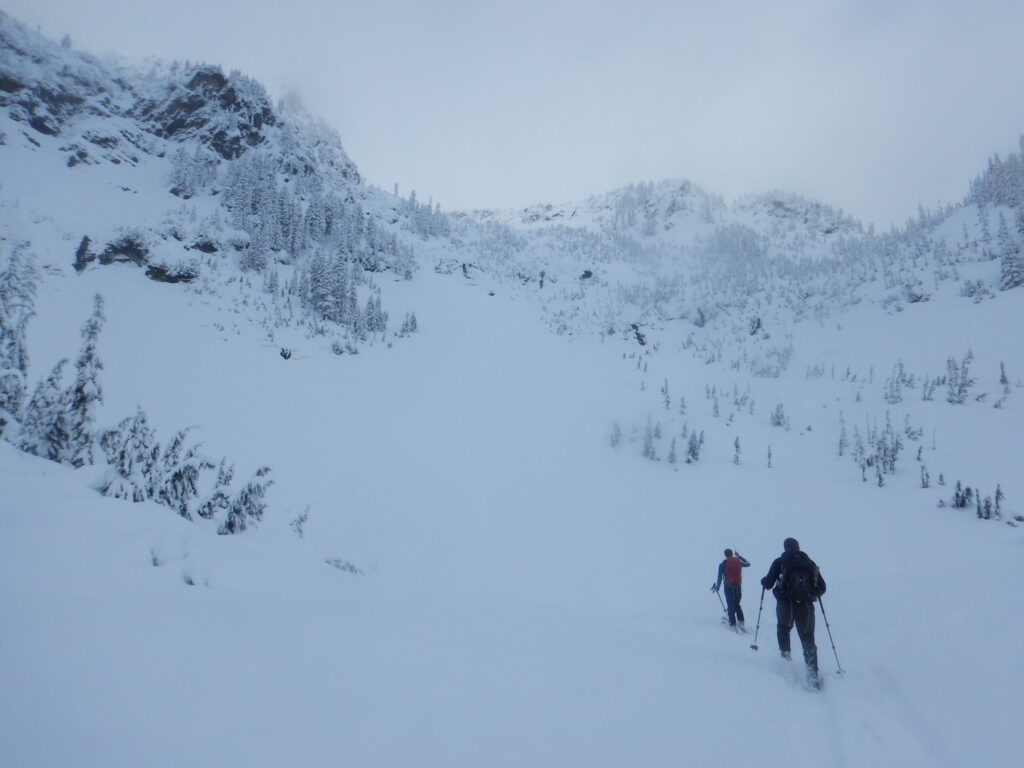
Once at the lake we were given final instructions and chose the roles we wanted. Scott jumped at the chance to experience a broken back. Ian picked the broken leg. I decided to be the reporting party whose job is to initially engage the search team. My duty would be short, freeing me up to roam around and take photos. Once the rescue teams located a “subject”, a duffel bag with an avalanche beacon, the appropriate person would jump in and assume their role.
We didn’t wait long before the first team of responders, called the hasty team, showed up on site. I immediately waved my arms and shouted “there’s been an avalanche!”
Look out Hollywood, I’m sure I’ll be up for an Oscar soon!
They shouted for me to move towards them if I could hear them, so I did. The goal was to get me out of harm’s way. A member of SPART then asked me a series of questions and took notes. “Are you ok? Where was the avalanche? How many people? What did you see? Can you describe your friends? What are they wearing? Any medical conditions? What happened before the incident? Your name? Age? Are you sure you’re ok?”
As he wrote down my information I realized that maybe I hadn’t researched my part well enough because he was amazingly thorough! I told him, as instructed, that 2, maybe 3 people were buried. I motioned to the huge area above Source Lake. The SMR member responsible for setting up the scenario pointed out the flagged boundary area for them to search. A responder on the SPART team exclaimed “Holy crap, that’s a big area! Well, I guess that’s reality, so let’s go!”
I was amazed at how quickly they hit the slope, went to work, and found the first beacon signal. It was buried surprisingly deep, which offered a challenging scenario. Dismissed from my reporting duty, I stood by and watched the three responders dig so expertly and diligently that it was hard to imagine it wasn’t a live person they were trying to save. The amount of snow they were moving was impressive.
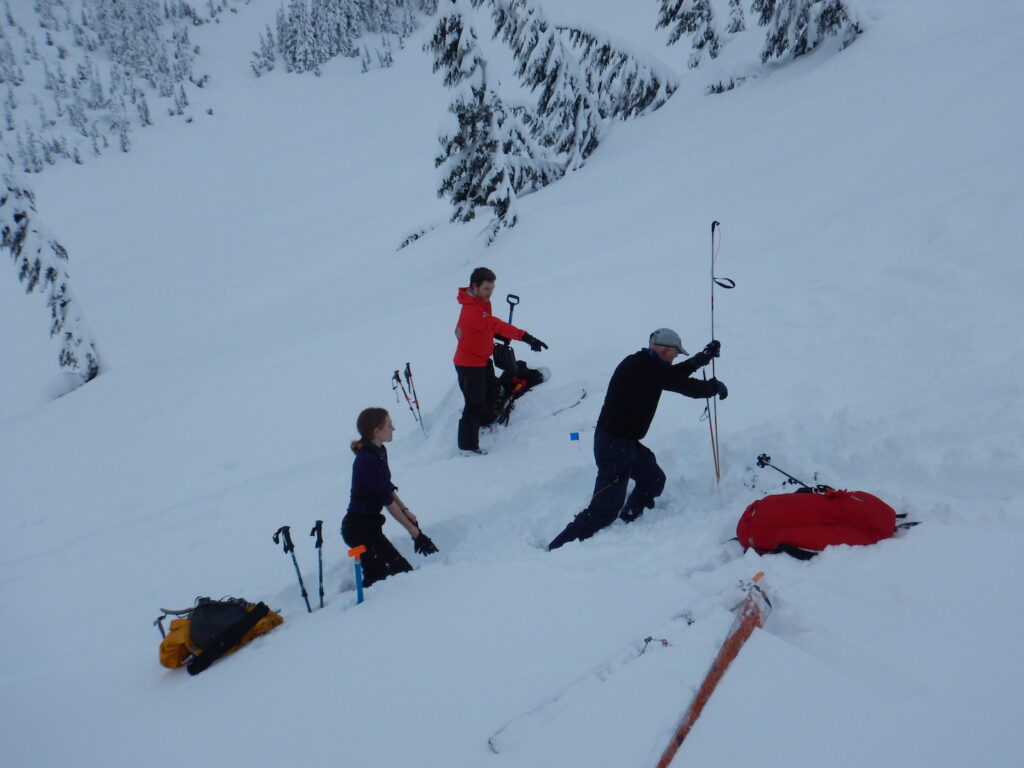
One responder moved upwards, expertly navigating the steep terrain while sweeping his beacon across the slope. It wasn’t long before they found the 2nd buried duffel and my friend Ian jumped in to play his role as a broken leg victim. As they tended to him, one responder moved on to keep searching as another team of 5 showed up below, checked in with the field lead, and headed up to help.
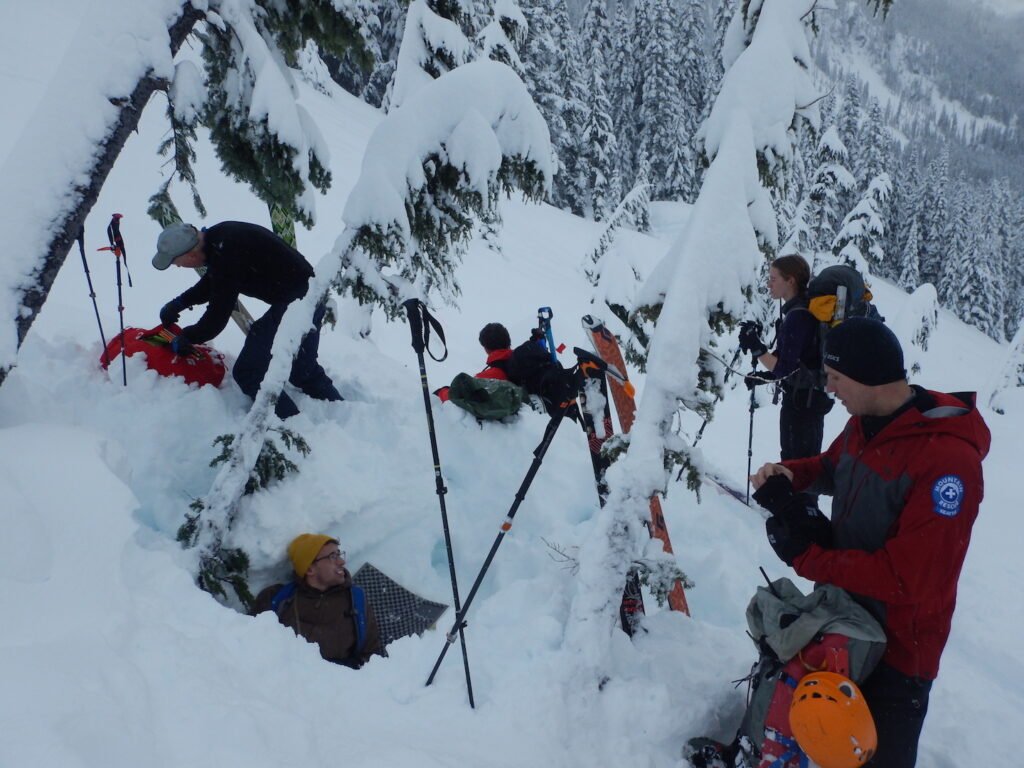
Before long the 3rd duffel was uncovered, Scott jumped in to play a broken back victim, and the whole scenario was well underway. I found myself running quickly between all the scenes, taking photos, and being impressed and overwhelmed by the flurry of activity. A few more teams had shown up and were all skinning up the mountain on skis with medical supplies, litters, a toboggan, ropes and gear.
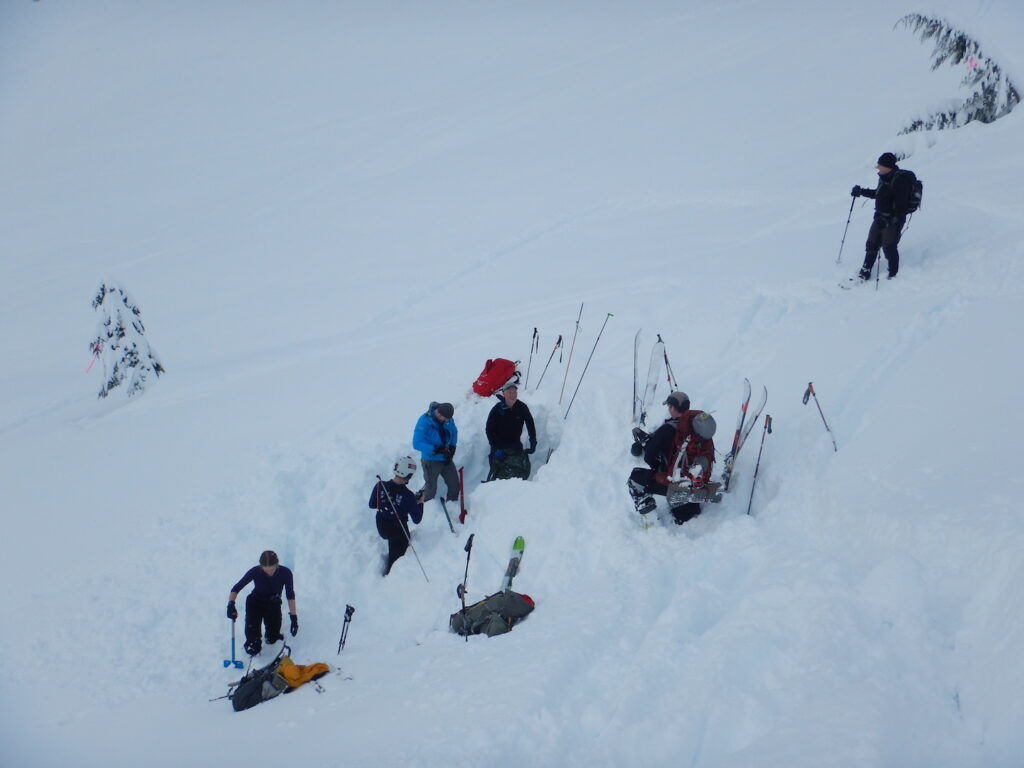
By this time, a team of rescuers had been dedicated to the care of each subject. They kept them warm by heating up hot tea, wrapping them in sleeping bags, and placing Nalgene bottles filled with hot water next to them. They triaged mock injuries and there were a few moments when it was hard to believe it wasn’t real.
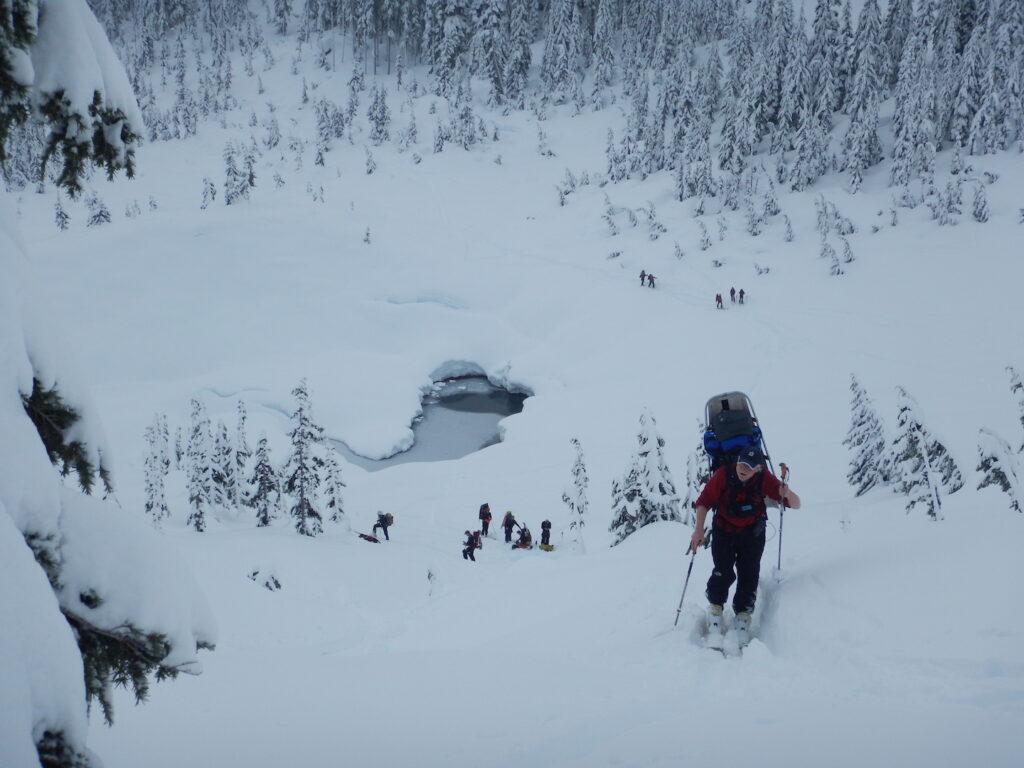
The scenario continued to ebb and flow. Every time more responders showed up on scene and it seemed to push towards chaos, someone stepped up to take control and organize. The communication was impressive and there were no egos or conflicts, only total cooperation.
Once all of the teams had been dispatched, the field leader moved up slope to get a better view of the scene. I was impressed by how well he was handling the situation. I would find out later it was his first response acting as a field lead. He was maintaining a map of the search area as well as the status of the subjects, all while relaying communications and constantly accounting for the location of every single rescuer. His duty wasn’t just to the subjects, it extended to the entire search team. We were, after all, in actual avalanche terrain. I think it’s easy to forget that search and rescue members have an equally important responsibility to keep themselves safe.
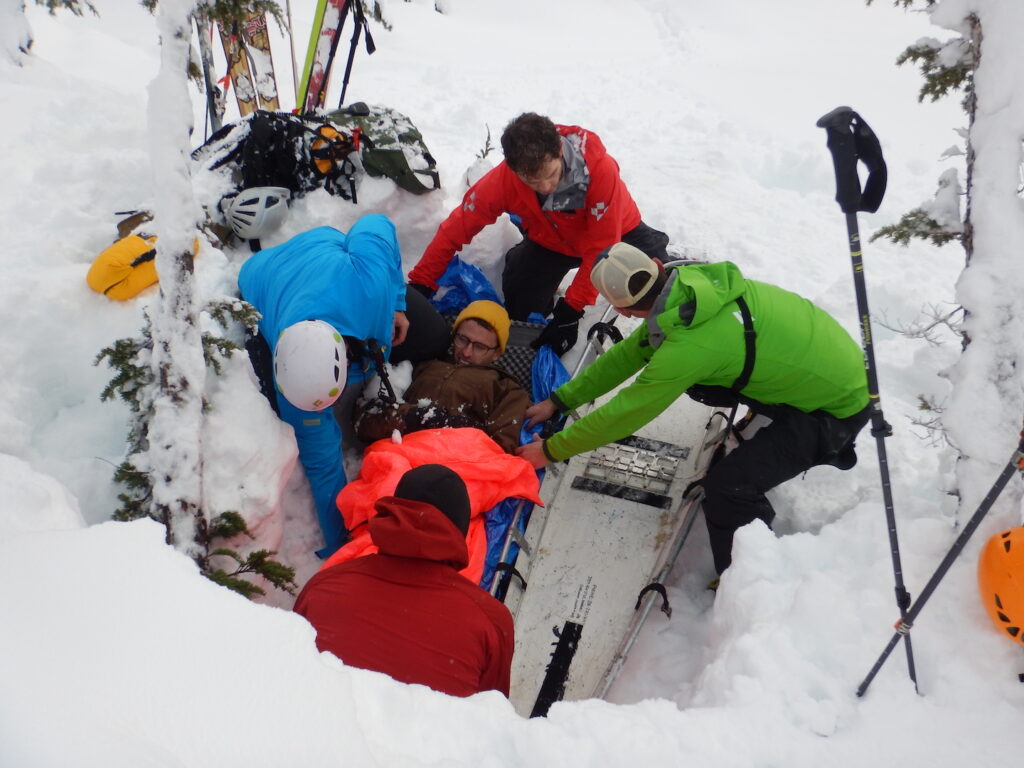
Since my friend Scott played the broken back victim, he was the most critical patient and as such, was expediently packaged, immobilized in a litter, and transported down the mountain by toboggan. Ian, the broken leg victim, was secured in a litter and lowered with rigging giving the team an opportunity to practice.
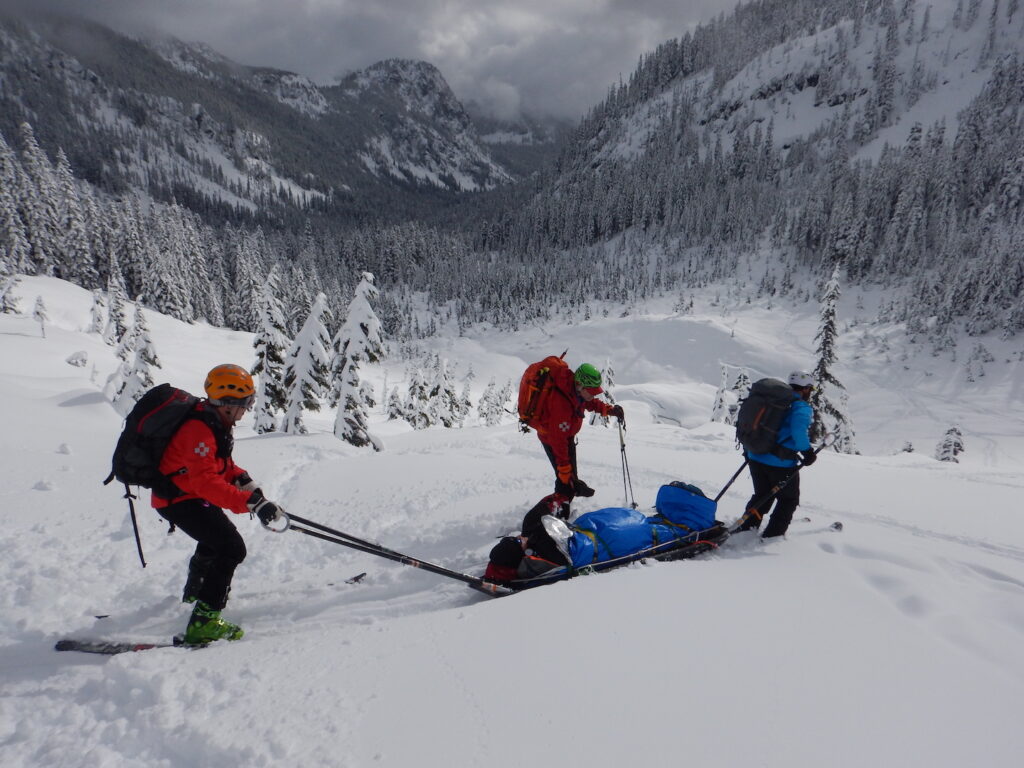
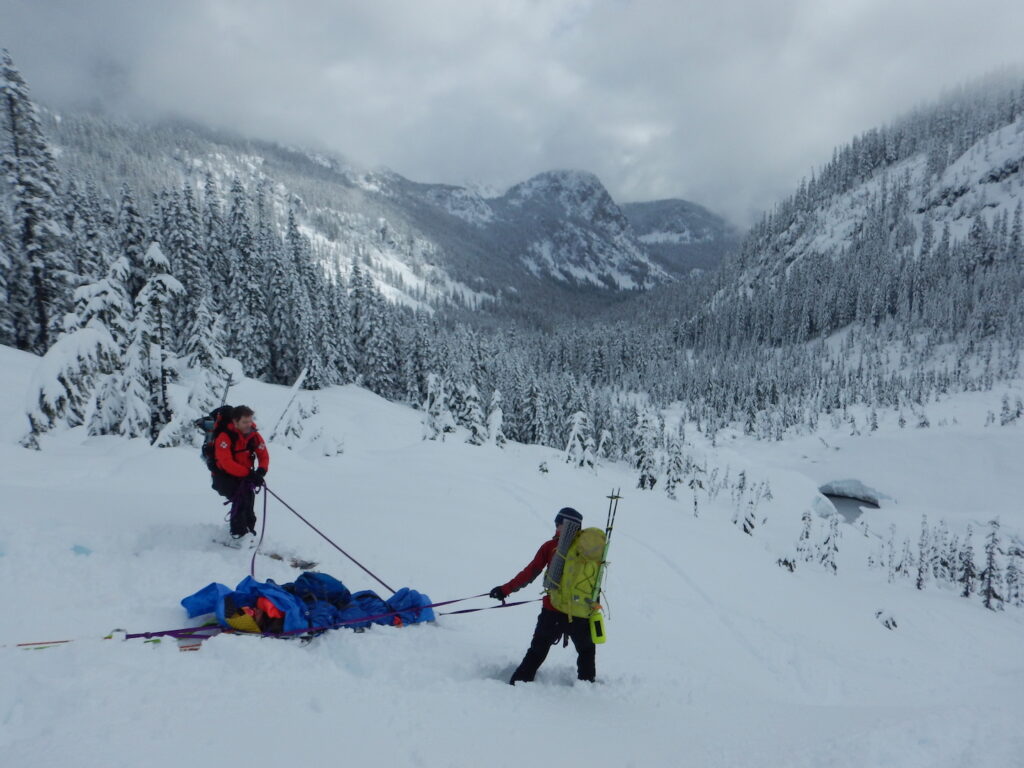
It was a bit over 2 hours from the point at which the first hasty team showed up until Scott and Ian were both safely down the slope and back to Source Lake. Afterwards, everyone reconvened for a long debriefing. The team broke down the scenario and talked through everything that happened. They objectively evaluated the entire day by identifying what went well and what could use improvement. Again, there were no egos, just genuine interest in how to perform to the best of their abilities. Ian and Scott were asked questions about their treatment and overall experience and everyone was all ears for feedback. Overall, the day was a smashing success!
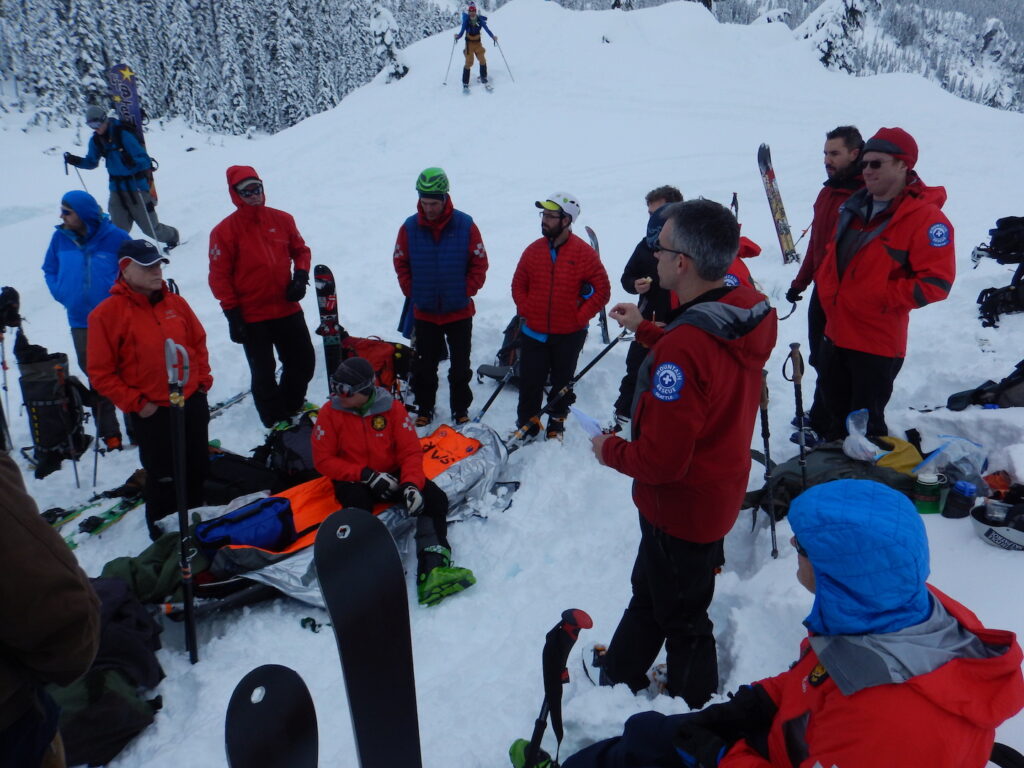
Both teams stayed to continue some afternoon training while myself and my friends snowshoed back to Alpental, incredibly happy to have contributed to our local search and rescue teams and pretty much in awe of what we had just witnessed.
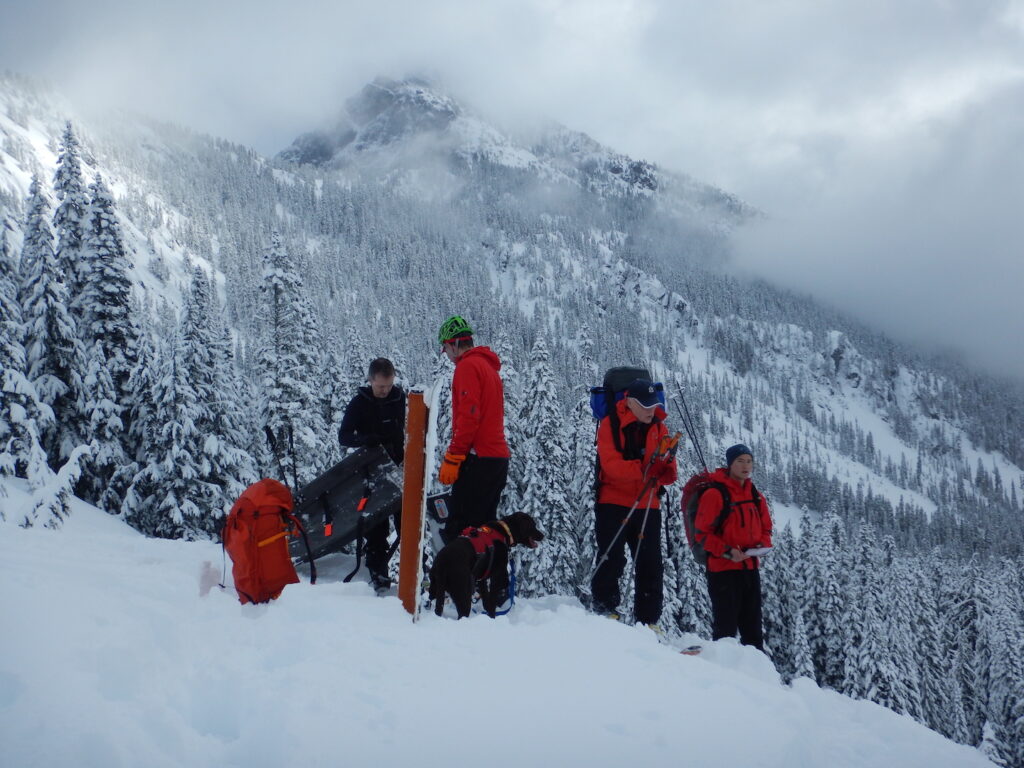
There will always be people out there who judge other’s actions, but even the most experienced of us can have an accident, make a bad decision, or simply get caught in challenging circumstances. I can tell you with unwavering confidence that if you are ever buried in an avalanche or in need of some serious outdoor help, King County is going to send a squadron of elite, qualified volunteers to come rescue you with absolutely no judgment passed.
I can’t thank SMR and SPART enough for allowing us to be a part of this awesome experience! Seeing the effort and dedication that goes into a successful search and recovery is sobering and obliges me to be as prepared and responsible as I can possibly be when adventuring outdoors. Below are KCSARA’s recommendations for staying safe in the backcountry as well as information about how to support their services through donations and sponsorships.
Happy safe adventuring everyone!!
Outdoor Safety Tips
Whether traveling into the backcountry for an hour, or several days, every person should tell someone where you are going and carry the 10 Essentials:
- Navigation (map and compass / GPS)
- Sun protection (sunglasses / sunscreen)
- Insulation (extra layers of clothing / sit pad)
- Illumination (headlamp or flashlight)
- First-aid supplies (including your personal prescriptions)
- Fire (waterproof matches or lighter / fire starter)
- Repair kit and tools (knife or multi-tool / duct tape / spare parts)
- Nutrition (extra food)
- Hydration (extra water)
- Emergency shelter (small tarp or tent / 25+ feet of cord)
Also consider bringing a communication device (phone or personal locator beacon) and some type of signaling device like a whistle or mirror.
If lost or injured, call 911, don’t delay! Stay put, stay dry, and stay warm.
If you’re doing winter backcountry travel, always check avalanche and weather conditions, carry a beacon, shovel, and probe, and choose your destinations wisely.
Want to Support King County Search and Rescue?
Each year KCSARA responds to over 100 missions in both urban and wilderness areas and can also provide assistance during natural disasters. Visit their website for more information on how to donate or provide sponsorship. Funds donated to KCSARA as a whole are distributed to all eight units equally.
KCSARA is comprised up of the following specialized units:
- 4X4 Search & Rescue
- Explorer Search And Rescue
- King County Incident Support Team
- King County Search Dogs
- Northwest Horseback SAR
- Pacific Northwest Trackers
- Seattle Mountain Rescue
- Ski Patrol Rescue Team


